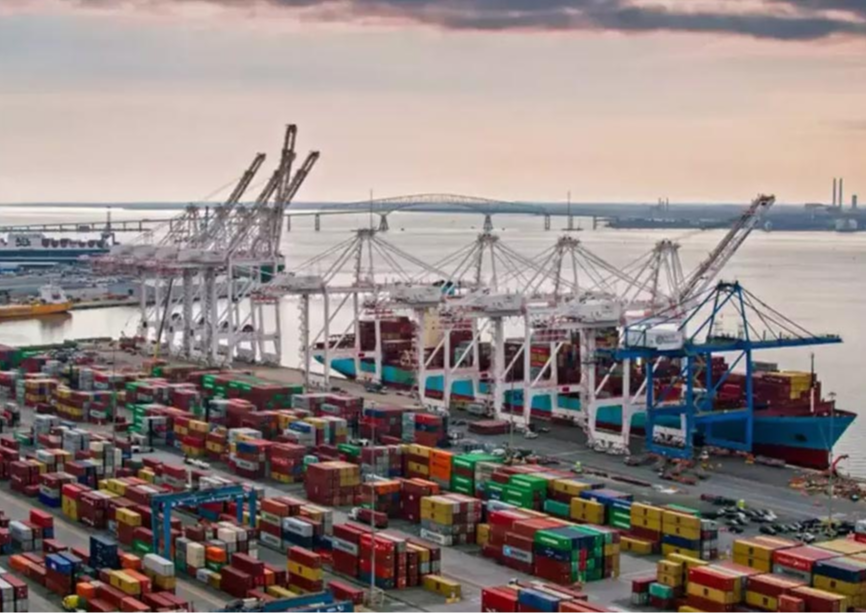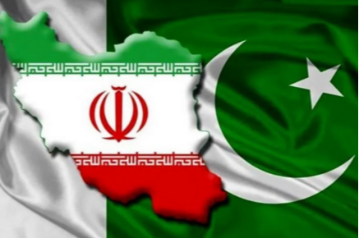
In a significant move, the Indian government has given the go-ahead for India Ports Global Ltd. (IPGL) proposal to take complete control of the Sittwe Port on the Kaladan River in Myanmar's Rakhine province on 6 April 2024. This momentous move marks Sittwe Port as the second international port, after Iran's Shahid Beheshti Port in Chabahar, to be managed by IPGL. IPGL is a subsidiary of Sagarmala Development Company Limited, which is governed by the Union Ministry of Ports, Shipping, and Waterways. While India only oversees two terminals in the Chabahar port, it will have complete control over the Sittwe Port and treat it like other domestic ports.
The recent agreement includes an extended lease of the port to India, which will be renewed every three years. IPGL will raise funds to develop the port further and intends to promote transactions in Indian rupees among traders.
While India only oversees two terminals in the Chabahar port, it will have complete control over the Sittwe Port and treat it like other domestic ports.
Located on the Kaladan River delta, the Sittwe Port forms an integral part of the Kaladan Multimodal Transit Transport Project (KMTTP), approved in 2008. Designed to handle deep-sea vessels up to 20,000 Dead Weight Tonnage (DWT), the port is poised to meet future demand for heavier vessels as usage grows over time.
On 9 May 2023, Shri Sarbananda Sonowal, Union Minister of Ports, Shipping, and Waterways, and Ayush officially inaugurated the port. He welcomed the first Indian cargo ship containing cement which travelled from the Syama Prasad Mookerjee Port in Kolkata to the Sittwe Port.
The current trade between India and Myanmar primarily includes construction materials like cement, steel, and bricks from India, while imports from Myanmar include rice, timber, fish, and seafood. With the expansion of the port, these trade goods may be replaced by higher value-added products.
The Indian states set to benefit most from the port's development are Mizoram and Tripura. The Tripura government has launched initiatives to create connectivity between the state and Myanmar via the Kaladan River. Construction work has begun to facilitate the establishment of these vital transportation links. The journey from Kolkata to Agartala takes approximately four days by road. However, by utilising the Sittwe–Chittagong–Sabroom–Agartala route via water and land, the transportation time will be only two days, saving money and time and reducing carbon emissions. A detailed project report (DPR) is still pending for this purpose.
The Tripura government has launched initiatives to create connectivity between the state and Myanmar via the Kaladan River.
Missing links
While the maritime route gains momentum, completing the road section is crucial for leveraging the multimodal aspect of the Kaladan project. The road element is supposed to link Kolkata and the Bangladeshi market to Mizoram via Sittwe Port, thereby boosting the commercial potential of the northeastern region. The 110 km road section and construction of the highways that are left face various challenges, including a lack of coordination among border agencies, rugged terrain, issues related to land compensation, and significant security concerns due to insurgency in the area. The pandemic and the 2021 coup have further hindered progress.
Ircon International, handling the construction of the road segment, engages local contractors to enhance relations and mitigate risks from insurgent attacks on the Kaladan project. The Myanmar New Power Construction Limited and Su Htoo Sen are set to complete different sections of the highway. However, the contract stipulates a completion period of three years and four months, considering potential delays due to environmental, political, and security challenges. Ongoing violence and military actions make forecasting a precise completion date difficult in the volatile situation.
The 110 km road section and construction of the highways that are left face various challenges, including a lack of coordination among border agencies, rugged terrain, issues related to land compensation, and significant security concerns due to insurgency in the area.
Additionally, while the Sittwe Port offers substantial trade potential for transporting goods, gas, or oil to the Northeastern Region (NER) of India, its effectiveness as a cost-efficient regular transportation route to the NER remains to be determined. This uncertainty stems mainly from the expected high expenses of frequent bulk breaking and transhipment. Furthermore, although the Paletwa terminal construction has been finished, its functionality hinges on completing maintenance dredging along the Kaladan River between Sittwe and Paletwa. This task must be fulfilled before cargo vessels only transport goods to the Sittwe Port.
Shifting powers
The growing conflict between the military junta and the Three Brotherhood Alliance, including pro-democracy forces employing drone attacks and street fights as part of Operation 1027, has shifted much of the power dynamics in Myanmar. Ethnic armed groups have gained control over border towns and trade routes along India, Bangladesh, Thailand, and China border regions.
Significant projects between India and Myanmar in the Rakhine and Chin states and the Sagaing region now fall under the control of ethnic armed groups. The Arakan Army's (AA) announcement on 25 March inviting foreign investors to invest in Rakhine State suggests its confidence in overcoming the Myanmar junta. The AA also called on existing foreign projects, such as the Chinese-backed Kyaukphyu port and Special Economic Zone (SEZ) and the India-backed-KMTTP, to cooperate with them and continue their work.
The AA currently controls multiple townships in Rakhine State and is actively targeting junta military outposts, aiming to capture them.
Beijing is investing in building Kyaukphyu deep-sea port and SEZ just 120 km away from Sittwe. Upon completion, the project will serve as the southern endpoint of the 1,700-kilometer China-Myanmar Economic Corridor (CMEC), linking it to the Chinese city of Kunming. This corridor will grant the landlocked Yunnan Province direct access to the Indian Ocean. Moreover, it is a strategic alternative route for Chinese shipping, offering a detour from the congested Malacca Strait. This diversion will facilitate smoother trade routes with the Middle East, Africa, and Europe.
Although an AA victory isn't certain, their confidence highlights Myanmar's ongoing turmoil and worsening conflict. The AA currently controls multiple townships in Rakhine State and is actively targeting junta military outposts, aiming to capture them. This situation underscores the junta's diminishing control. It signals to major foreign stakeholders like India and China that they may increasingly need to engage with the on-ground players rather than the junta in Naypyidaw.
Transitioning engagements
While China has historically engaged with ethnic groups along its borders and occasionally funded its initiatives, India is also adapting its approach by initiating dialogue. Mr Vanlalvena from the Rajya Sabha led a team to assess the deteriorating condition of the land stretch in the KMTTP in late February 2024 and engaged in dialogue with the AA. However, given the ethnic dynamics in Chin state, dominated by the Chin National Front/Army (CNF/A), New Delhi must also engage with them to ensure the smooth execution of its connectivity projects. Engaging with non-state actors is crucial for security and the successful implementation of economic projects.
While China has historically engaged with ethnic groups along its borders and occasionally funded its initiatives, India is also adapting its approach by initiating dialogue.
Additionally, fostering dialogue with the CNF/A is vital for promoting inclusivity and stability in the region. By engaging with key ethnic groups, India can ensure its connectivity initiatives benefit all stakeholders and contribute to long-term peace and prosperity.
Effectively managing Sittwe Port will allow India to play a vital role in promoting regional security and stability while also forging valuable partnerships. However, addressing conflicts becomes imperative to ensure the successful completion of the road component, which is essential for fully operationalising the entire Kaladan project. Resolving these conflicts not only facilitates the completion of the project but also highlights the significance of the KMTTP in enhancing regional connectivity and trade.
Sreeparna Banerjee is a Junior Fellow with the Observer Research Foundation
The views expressed above belong to the author(s). ORF research and analyses now available on Telegram! Click here to access our curated content — blogs, longforms and interviews.




 PREV
PREV


